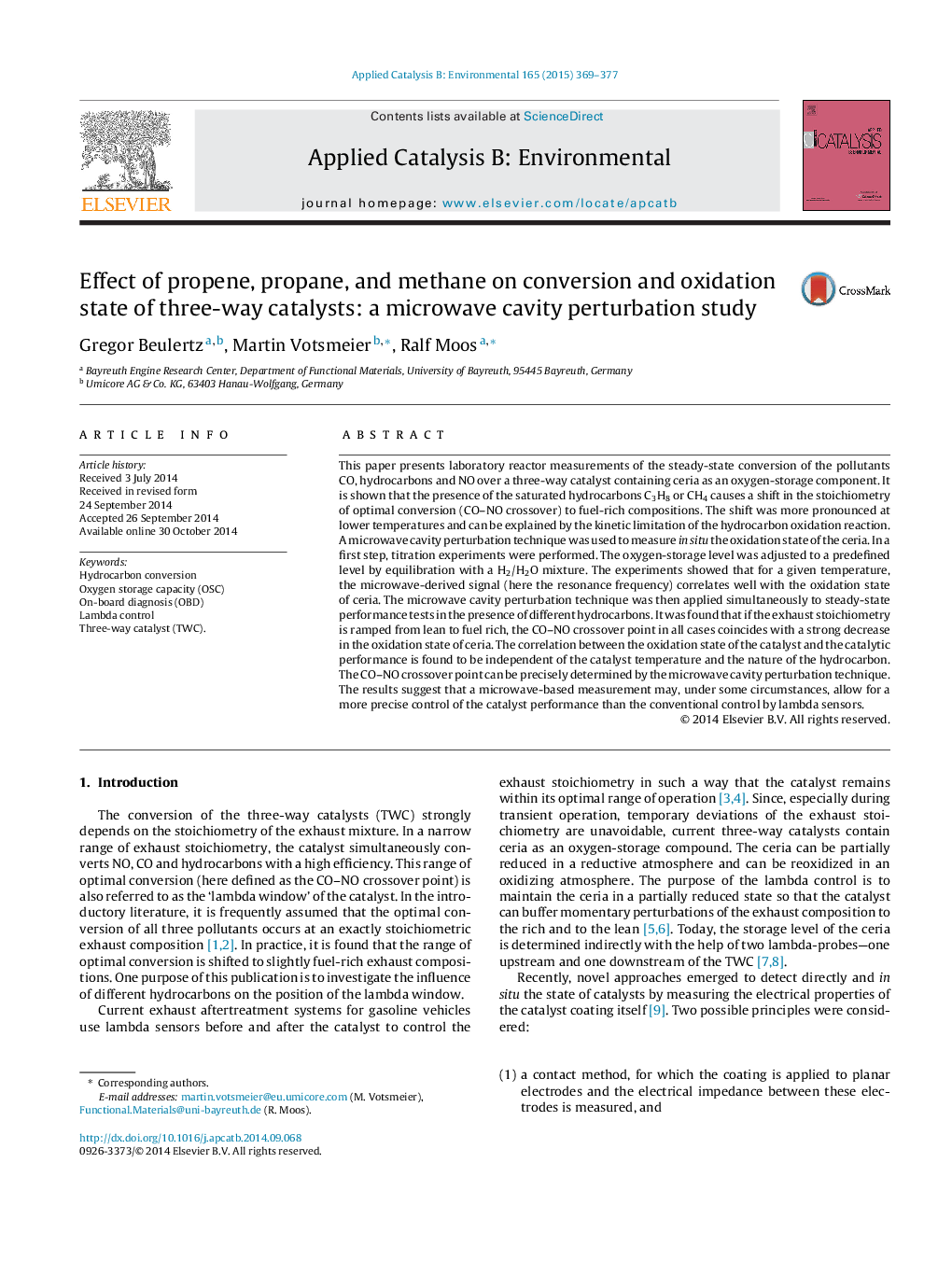| کد مقاله | کد نشریه | سال انتشار | مقاله انگلیسی | نسخه تمام متن |
|---|---|---|---|---|
| 45567 | 46416 | 2015 | 9 صفحه PDF | دانلود رایگان |
• Paper is concerned with the hydrocarbon conversion of three-way catalysts (TWC).
• A novel method (microwave cavity perturbation) can determine in operando the oxidation state of Ceria.
• The point of optimal hydrocarbon conversion coincides always with a strong decrease in the oxidation state of Ceria.
• The point of optimal conversion can be precisely determined by the microwave cavity perturbation technique.
• A more precise control of the catalyst performance compared to the conventional control by lambda sensors is possible.
This paper presents laboratory reactor measurements of the steady-state conversion of the pollutants CO, hydrocarbons and NO over a three-way catalyst containing ceria as an oxygen-storage component. It is shown that the presence of the saturated hydrocarbons C3H8 or CH4 causes a shift in the stoichiometry of optimal conversion (CO–NO crossover) to fuel-rich compositions. The shift was more pronounced at lower temperatures and can be explained by the kinetic limitation of the hydrocarbon oxidation reaction. A microwave cavity perturbation technique was used to measure in situ the oxidation state of the ceria. In a first step, titration experiments were performed. The oxygen-storage level was adjusted to a predefined level by equilibration with a H2/H2O mixture. The experiments showed that for a given temperature, the microwave-derived signal (here the resonance frequency) correlates well with the oxidation state of ceria. The microwave cavity perturbation technique was then applied simultaneously to steady-state performance tests in the presence of different hydrocarbons. It was found that if the exhaust stoichiometry is ramped from lean to fuel rich, the CO–NO crossover point in all cases coincides with a strong decrease in the oxidation state of ceria. The correlation between the oxidation state of the catalyst and the catalytic performance is found to be independent of the catalyst temperature and the nature of the hydrocarbon. The CO–NO crossover point can be precisely determined by the microwave cavity perturbation technique. The results suggest that a microwave-based measurement may, under some circumstances, allow for a more precise control of the catalyst performance than the conventional control by lambda sensors.
Figure optionsDownload as PowerPoint slide
Journal: Applied Catalysis B: Environmental - Volume 165, April 2015, Pages 369–377
